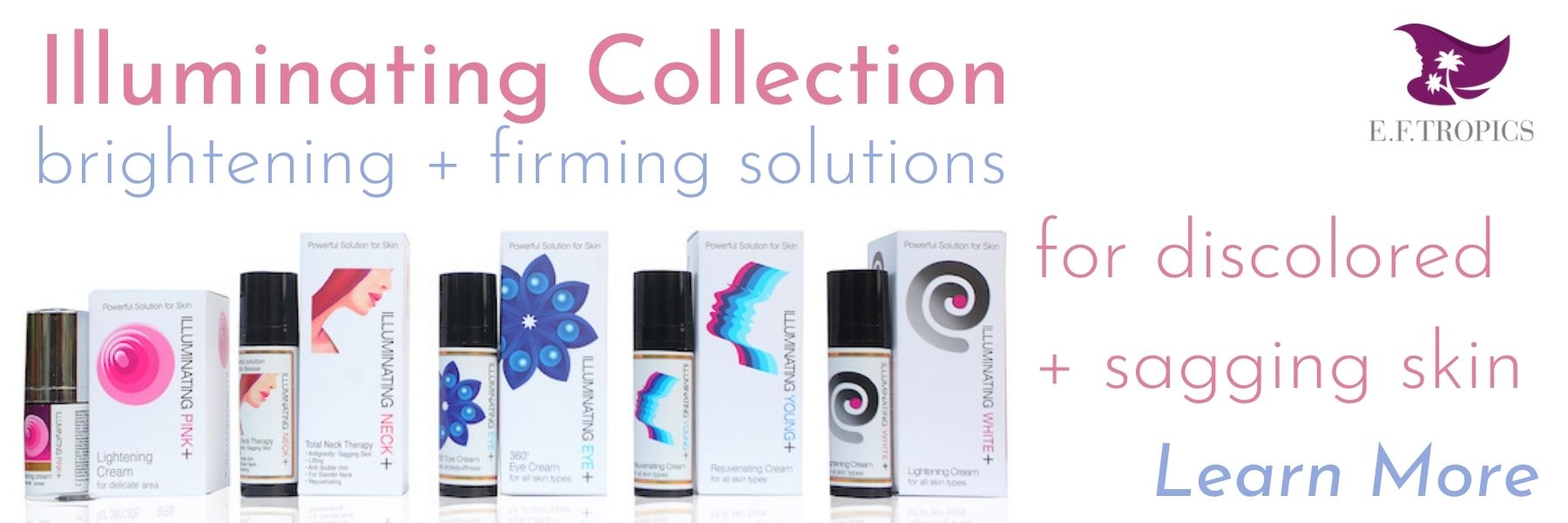The Role Of Tyrosinase In The Formation of Hyperpigmentation
Tyrosinase role in sunspots, age spots. dark marks. discoloration. uneven tone, melasma – all different names for hyperpigmentation, which results from the overproduction of melanin in the skin. Melanin is produced by your melanocyte cells and is what gives your skin and hair it’s color. When your skin is challenged it can force your melanocytes to overproduce pigment resulting in the difference of color in areas where your skin is a deeper hue than your traditional skin tone.
This function is directed by an enzyme called tyrosinase. Think of tyrosinase as the instructor of the melanocyte cells. Tyrosinase enzymes provide a chemical reaction to the skin, impacting how much melanin your melanocyte cells produce. Many factors can influence your melanocytes to overproduce pigment including physical trauma, hormonal fluctuations, environmental stressors, and medications.
Using Tyrosinase Inhibitors To Prevent Hyperpigmentation
No matter the traditional hue of skin tone, your melanocyte cells can overproduce pigment forcing your skin to inherit hyperpigmentation. How can we treat this or prevent it from happening? Tyrosinase inhibitors! These include many naturally occurring antioxidant sources that are derived from fruits and herbs. These sources include: kojic acid, arbutin, and L-ascorbic acid (commonly known as Vitamin C). These antioxidant sources help prevent hyperpigmentation from forming by also acting as free radical scavengers. These sources are constantly looking out for free radicals to assist before they create chaos. Free radicals influence tyrosinase function by disrupting the tranquillity of skin cell composition. Your skin cells are made of the perfect ratio of molecules which can create issues when they are affected. Free radicals are missing an electron and are searching for the perfect source to take one from which puts your skin cells in danger. Antioxidants protect your skin cells by giving the free radical an extra electron to stabilize it, so an increase in tyrosinase function is not triggered.

Contribution by Samantha Castro-Naughton
Samantha Castro-Naughton, owner of Samantha Madison Esthetics medical spa, DMK Paramedical Dermal Technician, and Licensed Esthetician specializing in moderate to severe acne and reactive skin disorders. Going on my fourth year of business independently, I focus my practice in holistic + results driven treatments to ensure every part of the body is treated equally. I have a love for biology and physiology, which compliments my genuine love for my career. Located in the Central Valley in California, my spa is where “science meets holistic healing!”
Correcting Hyperpigmentation
Treating hyperpigmentation requires consistency in both treatments and corrective homecare due to the number of triggering factors that can influence your skin on a daily basis. Powerful antioxidants and brightening ingredients such as Kojic Acid, Arbutin and Vitamin C, Mandelic Acid, Mulberry Extract, Licorice Root, Lactic Acid, and Bearberry Extract are included in many homecare products and professional treatments to provide a glorious battle against hyperpigmentation formation.
Three Professional Treatments For Hyperpigmentation
“My absolute favorite treatments include DMK Bihaku Enzyme Treatment and GLYMED 5 Berry Pigment Control Peel!”
These two are perfect treatments for treating hyperpigmentation and preventing formation of discoloration thanks to their color-blind state, making it a safe treatment for all hues of skin tone. This is very important when treating multi-ethnic skin to ensure that, as a professional, you are keeping the beautiful warm hues of darker skin tones consistent, and not bleaching the skin!
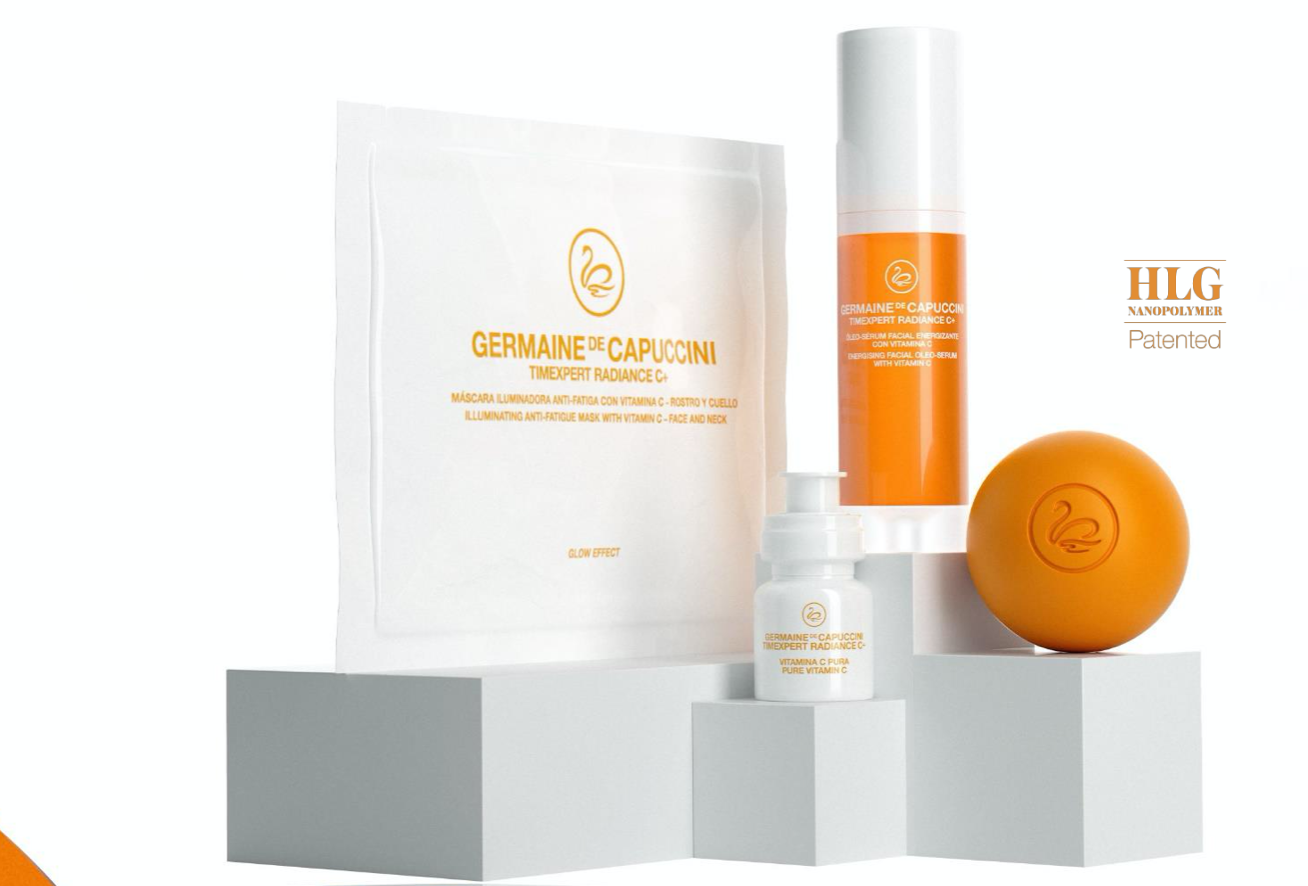
Germaine de Capuccini Timexpert Radiance C+ Anti-Fatigue Treatment With Vitamin C
The Germaine de Capuccini Timexpert Radiance C+ Anti-Fatigue Treatment incorporates an HLG nanopolymer to assist the skin in absorption and potency of bioavailability of pure Vitamin C and Vitamin E in the skin. This creates a powerful tool towards age management and uneven skin tone. The treatment is incredibly relaxing because 3 of the key steps require the esthetician to massage the proprietary product into the skin, while the 4th step is a Face and Neck Sheet mask, while the esthetician massages the hands, arms, and shoulders.
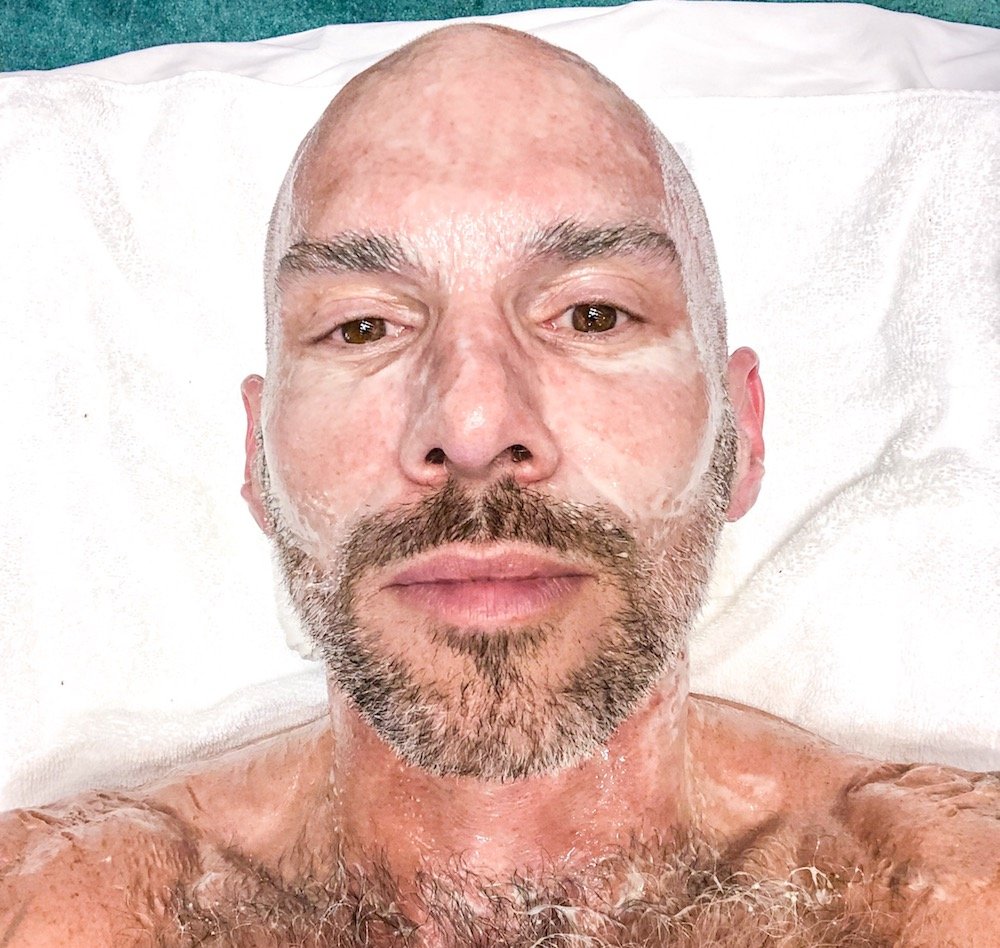
DMK Bihaku Enzyme Treatment
DMK Bihaku Enzyme Treatment features Kojic Acid, Phytic Acid, Magnesium Ascorbyl Phosphate, Licorice Root, Mulberry Extract, and Lactic Acid to treat hyperpigmentation and uneven skin tone with a combination of lightly exfoliating AHA’s and brightening antioxidants to help lift pigmented skin cells! The light AHAs act as a delivery system to enhance the absorption of the brightening antioxidants to treat hyperpigmentation at the root of formation.
GLYMED 5 Berry Pigment Control Peel
GLYMED 5 Berry Pigment Control Peel uses Trichloroacetic Acid (TCA), Licorice Root, Bearberry Extract, Phytic Acid, Ascorbic Acid (Vitamin C), Cranberry Extract, Raspberry Extract, Blackberry Extract, and Blueberry Extract to force desquamation of hyperpigmentation from the surface of the skin to help brighten the appearance of discoloration and to treat even the strongest forms of hyperpigmentation such as Melasma. These are best done in a series every 14-28 days, depending on severity of your skin concern.
4 Home Care Picks For Hyperpigmentation
Corrective treatments should always include complimentary homecare ingredients to ensure that your skincare routine has the proper tools to prevent an opportunity for hyperpigmentation to form again. Exposure to UV radiation and environmental toxins are daily competitors that can influence hyperpigmentation to reform even after a corrective treatment. Disharmony and premature desquamation with corrective treatments can trigger reform of discoloration as well, so this is the perfect time to pack on the antioxidants and brightening ingredients!
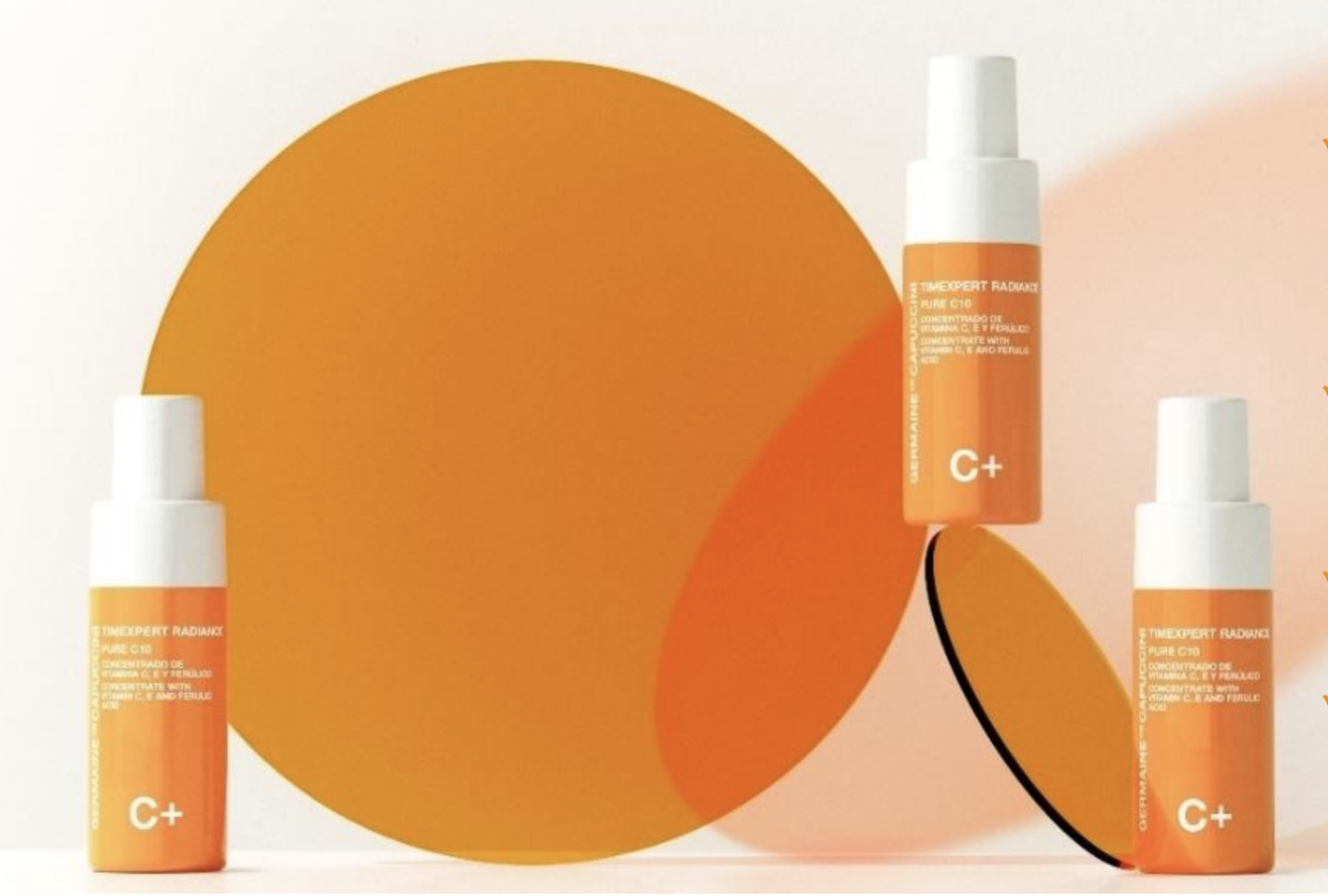
Germaine de Capuccini Timexpert Radiance C+ Pure C10
Germaine de Capuccini Timexpert Radiance C+ Pure C10 Advanced antioxidant serum that works as an extraordinary shield against free radicals and photoaging. Reduces visibly darks pots and stops the signs of aging such as dehydration and loss of firmness. For the first time, a treatment that multiplies 6 times the effectiveness of Pure Vitamin C* thanks to the patented HLG Nano polymer, which nourishes cells in-depth and allows a sustained release of the active ingredients. Vitamin C is one of the hardest ingredients to keep stabilized due to oxidation, so this combination is next level!
DMK International Melanotech Drops
DMK International Melanotech Drops features herbal antioxidants such as Kojic Acid, Licorice Root, and Halidrys Siliquosa Extract to help treat hyperpigmentation and control the influence of UV penetration. Kojic Acid and Licorice Root both brighten the skin while Halidrys Siliquosa Extract assists the skin in the correlation of UV penetration and triggering tyrosinase function to help prevent discoloration from reforming.
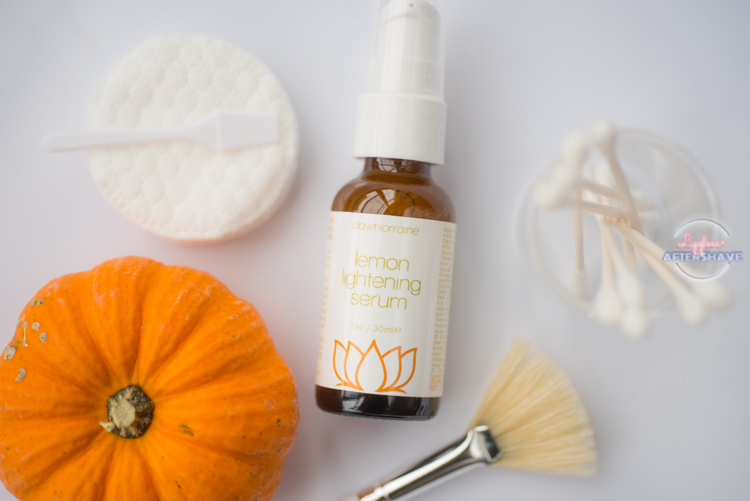
Dawn Lorraine Organic’s Lemon Lightening Serum
Lemon Lightening Serum uses a powerful combination of Mandelic Acid, Bilberry, Cranberry, Mulberry, Licorice Root, Bearberry, Kojic Acid, and Niacinamide to treat discoloration, enhance absorption of antioxidants, and to create an even canvas of tone. Mandelic Acid acts as a light exfoliating agent while enhancing absorption of the many antioxidants and brightening ingredients it obtains! Niacinamide, commonly known as Vitamin B3, is a water-soluble vitamin that helps repair the skin’s barriers and treat past signs of damage. Vitamin B3 can assist the skin in brightening uneven skin tone, treat post-inflammatory erythema, and heal irritation in the skin. This serum has an unbeatable combination of brightening and healing ingredients, making it very versatile!
Vivant Skin Care Mandelic Acid 8% Serum
Vivant Skin Care Mandelic Acid 8% Serum is a combination AHA + BHA serum which wears many hats! Mandelic Acid is a fat-soluble acid that can penetrate deeper inside the pore while obtaining its large molecular weight. This allows Mandelic Acid to be very effective when treating congestion as well as hyperpigmentation at the same time without irritating the skin. The larger the molecule, the harder it is for that molecule to absorb into the skin because of its size. Although, because Mandelic Acid is fat-soluble it can penetrate into the oil secretions of the pore without creating much irritation. Mandelic Acid is also a color-blind acid, allowing it to be safe for all hues of skin tone!
No matter the severity of your skin concerns, combining both treatments and home care is always more effective. The treatments you experience with a skin care professional are going to force premature desquamation of these damaged, pigmented cells to allow new healthy cells to come to the surface creating a more even complexion. Now, because hyperpigmentation is created because of the tyrosinase conversation between melanocyte skin cells, you must also use treatment ingredients at home to control triggering this function from overproducing again. This will ensure that you are efficiently treating and preventing hyperpigmentation at the same time!
REFERENCES
Desai, Seemal R. “Hyperpigmentation therapy: a review.” The Journal of clinical and aesthetic dermatology vol. 7,8 (2014): 13-7.
Cichorek, Mirosława et al. “Skin melanocytes: biology and development.” Postepy dermatologii i alergologii vol. 30,1 (2013): 30-41. doi:10.5114/pdia.2013.33376
Casanola-Martin, Gerardo M et al. “Tyrosinase enzyme: 1. An overview on a pharmacological target.” Current topics in medicinal chemistry vol. 14,12 (2014): 1494-501. doi:10.2174/1568026614666140523121427
Shen, Zhiwei et al. “Novel tyrosinase inhibitory peptide with free radical scavenging ability.” Journal of enzyme inhibition and medicinal chemistry vol. 34,1 (2019): 1633-1640. doi:10.1080/14756366.2019.1661401
Zolghadri, Samaneh et al. “A comprehensive review on tyrosinase inhibitors.” Journal of enzyme inhibition and medicinal chemistry vol. 34,1 (2019): 279-309. doi:10.1080/14756366.2018.1545767

